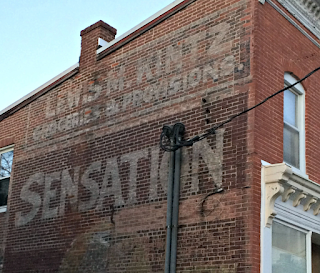Ball Lightning Spared Spotter's Mansion
Lightning bolts can be terrifying enough, but ball lightning is something else again. Floating horizontally only a few feet off the ground, these glowing plasma globes, generally associated with thunderstorms, can bob, weave, change direction, even “follow” observers in ways that seem unnervingly intelligent. They have been known to roam the interiors of houses, and they have a nasty habit of “exploding” when they hit something solid.
Once ball lightning was dismissed as folktale or hallucination, discussed seriously only on woo-woo TV shows such Arthur C. Clarke’s Mysterious World – where, on Episode 13, Sir Arthur called ball lightning the “most important of all mysteries,” because of the tantalizing prospect of plasma technology. Today, if not quite “tweedy with respectability,” as Ryan Shirlow put it recently in Fortean Times, ball lightning nevertheless is regarded as a real – but really weird – weather event. “Scientists say they have much to learn about the mysterious phenomenon,” National Geographic reported in 2019.
Long before most experts took ball lightning seriously, witness accounts of “balls of fire” were staples of newspaper weather coverage, especially when the witnesses were locally prominent. Take, for example, the one witnessed by Mary Anna Bevans Cohill in June 1954.
Besides being central to Washington County society as wife of a prominent “gentleman farmer” and mistress of Stafford Hall, a slave-built mansion dating from the 18th century, Cohill was a science enthusiast who, at the time of her ball-lightning report, had been keeping daily observations for the U.S. Weather Service for more than 30 years.
In the wee hours of Friday, June 11, 1954, two thunderstorms swept across Stafford Hall. The second, Cohill told the Hagerstown Daily Mail, was the worst of her weather-spotting career, not for wind or for rain (only a half-inch fell all night), but for lightning.
“It was an inferno up here until 3:30 o’clock this morning,” said Mrs. Cohill. “The lightning didn’t let up for hours. Bolt after bolt seemed to be striking all around the house which was lighted up by the brilliant lightning. As soon as the crashing thunder of one bolt died away, another would blaze in the skies.”
One imagines Cohill looking out the windows for much of the night, delighting in the spectacle. That’s why she able to see the fleeting “ball of fire.”
“Then I saw the ball of fire heading for the house out of the north. It was about the size of a football. But when it got near the house, it seemed to lift and slipped past the house and headed into the south,” said Mrs. Cohill.
She must have been greatly relieved, because she knew firsthand how destructive ball lightning could be.
Mrs. Cohill said she saw her first ball of fire during a storm 20 years ago and that ball hit and set afire the barn near the house. The barn was burned down.
Indeed, about 20 miles away that very night of June 11, a barn full of hay and equipment was struck by lightning and burned down on the Wyand dairy farm near Keedysville. Judging from the account in the Daily Mail, no one was watching at the moment of the Keedysville strike; it’s interesting to speculate how many “lightning strikes” would more properly be termed ball lightning strikes, had anyone witnessed the crucial seconds leading up to the blast.
Cohill would continue as Clear Spring’s official weather observer until her death in June 1962, age 76. I don’t know whether she ever saw ball lightning a third time.
Certainly she had opportunity. Only two months later, in August 1954, the same Hagerstown newspaper mentioned “A Hamilton Boulevard housewife who saw a big ball of fire hit her garage during thunderstorm.”
At the time, The Daily Mail paid for news tips, and the housewife was awarded one dollar (the equivalent of $10 today), but there was no elaboration, no follow-up, no indication of whether the garage was damaged. Whatever the name of the anonymous tipster, she certainly was not as socially formidable as Mary Anna Bevans Cohill, the weather spotter of Stafford Hall.
Sources:
Nunez, Christina. “Ball lightning: weird, mysterious, perplexing, and deadly.” National Geographic, 5 March 2019 [https://www.nationalgeographic.com/environment/article/ball-lightning]. Accessed 8 Nov. 2021.
Shirlow, Ryan. “Revisiting Arthur C. Clarke’s Mysterious World, Part 3.” Fortean Times Dec. 2021 (No. 412), 44-48.
“Tip On Crash Fatal To 5 [Is] Best.” The Daily Mail (Hagerstown, Maryland). 23 Aug. 1954, Page 1. Accessed 8 Nov. 2021 via Newspapers.com.
“Weather Observer Sees Ball Of Fire During Vicious Storm / Mrs. Leo Cohill, Of Near Clear Spring, Describes Terrific Storm Early today, But Damage Appears To Be Negligible.” The Daily Mail (Hagerstown, Maryland). 11 June 1954, Page 1. Accessed 8 Nov. 2021 via Newspapers.com.
“Wyand Barn, Hit By Bolt, Burns.” The Daily Mail (Hagerstown, Maryland). 11 June 1954, Page 1. Accessed 8 Nov. 2021 via Newspapers.com.

Comments
Post a Comment